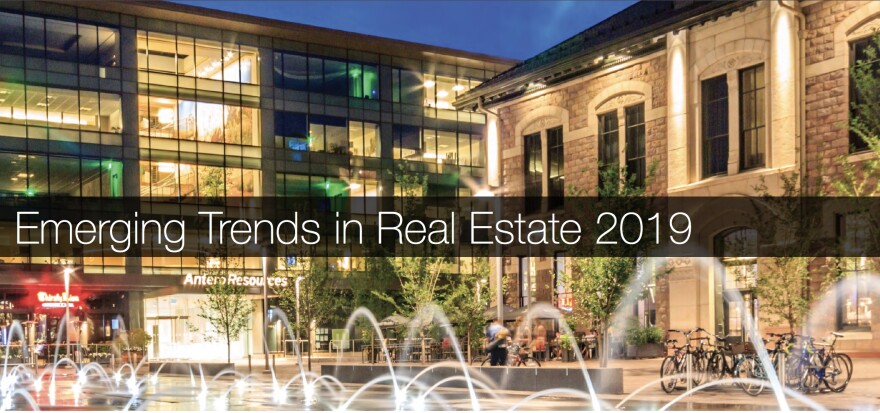Members of the St. Louis real estate industry are celebrating a banner year and looking forward to 2019.
Developers, investors, builders and housing advocates gathered today for a presentation of the 2019 Emerging Trends in Real Estate survey, published annually by the Urban Land Institute (ULI) and PwC US.
“This is our largest event of the year,” said Chip Crawford, chair of ULI St. Louis, after the meeting held at Innovation Hall in the Cortex Innovation Community.
Crawford is senior principal at BatesForum, the design practice of Clayco.
“There’s so much going on right now in a positive way. We can finally all come here and smile and say, ‘It’s working, we’re getting things done.’”
Crawford touted current construction projects totaling $8 billion in the central corridor of St. Louis — from Forest Park to the Arch — as a source for the enthusiastic buzz and smiles at the meeting.
Data from the Emerging Trends survey suggests that the real estate industry in St. Louis and nationally is poised to stay on a positive track in the coming year.
The Emerging Trends study is based on interviews and survey responses from nearly 2,400 leading real estate experts, including investors, fund managers, developers, property companies, lenders, brokers, advisers and consultants.
Co-author Andy Warren presented results from the study. He said St. Louis and many other cities are facing a similar challenge: how to attract and retain younger workers.
“You’re not necessarily going to go out and lure Amazon to every city,” Warren said. “I think many people are looking at what they have as an intrinsic advantage, and they are trying to build on that, instead of mimicking the next city.”
The growth of the Cortex district is a good example, said Warren. It’s attracted more than 5,000 entrepreneurs in a variety of fields and has spawned residential and retail growth nearby.
“This area, with its startup community — that’s the kind of thing that will attract people back,” he said.
While Cortex may be one of the most visible real estate successes in St. Louis, ULI’s Crawford said investment and development is happening all over the city. “I’ve been blown away by projects north and south of the central core — the central core has gotten plenty of attention. It’s great to see the attention extend into the neighborhoods that need it most.”
Two projects beyond the core were briefly discussed at the meeting.
Esther Shin of Urban Strategies, Inc., said her nonprofit is working on a major project on the near north side to build affordable housing. She said the city had received a $29.5 million Housing and Urban Development grant to fund the project. She also encouraged the audience to find ways to leverage the National Geospatial-Intelligence Agency's future site on the north side to the benefit of the surrounding communities.
Another participant and developer, Kevin Bryant, president of Kingsway Development, stressed it takes patience and time to manage real estate projects in neighborhoods that have been underserved for decades. He said after four years of planning, bureaucratic red tape and collaboration with community organizations, he is ready to rehab homes in the Fountain Park and Lewis Place neighborhoods in 2019.
Trends across the country
The Emerging Trends survey includes a top-10 list. Warren said that each city has its own strengths that reflect some of the major trends in successful real estate markets.
Dallas/Fort Worth is in the #1 spot for a second year, due to its young workforce and high business-start-up activity, according to a press release from ULI. Brooklyn (#2), Orlando (#4) and Tampa (#10) made the top 10 for the first time in the report’s 40-year history.
Investors find Brooklyn attractive for its urban, industrial appeal and the trend of finding a “last mile” for e-commerce delivery. Orlando and Tampa/St. Petersburg are in the top 10 for their demographic growth, friendly business climate and attractive cost structure.
Raleigh-Durham (#3), Nashville (#5), Austin (#6) and Boston (#7) round out the list as investors follow the STEM (science, technology, engineering and math) jobs — projected to grow 73 percent faster than the broader job market through 2026 — with annual wages more than double the local average in these tech-heavy markets.
Follow Melody on Twitter @melodybird



